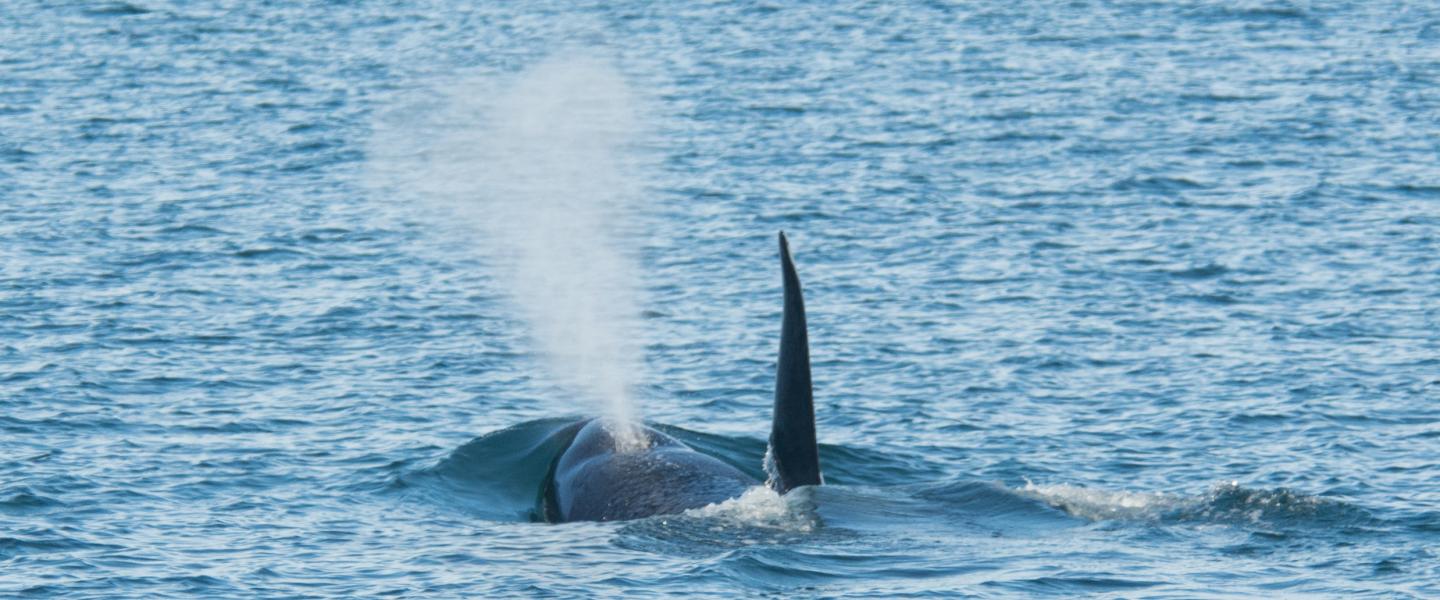
[Saturday 02/10/2018, M/V Sea Lion 12:00, Naturalist Erick]
And…we’re back! Saturday was San Juan Safaris’ first public trip of 2018! A high pressure system has moved into the San Juan Islands so this weekend has been sunny, calm, and a little brisk. Most folks come to see whales in the summer months for many reasons. The weather is nice, kids are off from school, and that is when we usually see the Southern Resident Killer Whales – the famous J, K, and L pods. Unbeknownst to most though, there are whale species around the islands and in the Salish Sea year-round. Harbor Porpoises are present all months of the year. We occasionally see Pacific White-sided Dolphins in the winter, and Transient (Bigg’s) Orcas hunt around the islands every month of the year as well! Winter and spring on the islands can be amazing: filled with whales, wildlife, and beautiful scenery without the crowds of summer.
Sea Lions
Today was a good first day. We left Friday Harbor and headed south through San Juan Channel. As we exited the calm shimmering waters of Griffin Bay we entered the swirling currents around Whale Rocks. These rocks are a resting place for many animals and today we saw a pair of Bald Eagles and a whole bunch of Steller Sea Lions. These big boys – the sea lions - are some of our winter residents. They arrive in fall and will leave in the spring to migrate to breeding grounds further north, but while down here they spend most of their time relaxing, hunting, and fattening up to prepare for their northward migration and months of breeding and no eating. We watched about 20-30 of these giant Sea Lions nap, roar, waddle over each other, and swim through the waves – all 2,000 lbs. of them.
Porpoises Galore
Next, we headed west to search the waters of the Strait of Juan de Fuca and the southern half of Haro Strait. These are two of the larger bodies in the Salish Sea and within them there are many shallow areas that concentrate nutrients and schools of fish that cetaceans and other marine mammals love to feed on. Over one of these shallow areas called Middle Bank we saw a small group of Harbor Porpoises. Usually these porpoises, which are the second smallest cetaceans in the world, are super shy, afraid that we are just another predator in the long list they have to worry about avoiding. But today, today was different. This small group continued to fish, dive, and porpoise around us as we shut down the engines and watched. As we watched this small group above and below the surface we kept spotting more and more groups and till we noticed that there were probably around 100 harbor porpoises, all in small groups, happily diving, and fishing all around us. This was a super unusual sight. In five years I have never seen a group of porpoises like this! They shot back and forth, up and down, and we heard them breathe as they sliced through the clear green waters surrounding us.
Orcas!
We continued west and soon spotted blows on the horizon. Just south of Discovery Island near Victoria, B.C. we spotted two Transient (Bigg’s) Orcas. Orcas almost always travel in family groups and this family group was identified as the T010’s. This is a small family group of only two member currently: T010 and T010C. Like all orca families Transients are matriarchal and T010 being an adult female was traveling with her almost full-grown adult son, T010C. You can tell the difference between the sexes by the size of their dorsal fins. Male fins are about 6 feet tall while female fins are around 3-4 feet tall. These two swam north skirting the shore of Discovery Island and soon scared a bunch of unsuspecting Steller Sea Lions causing quite a commotion. It seems they weren’t hungry at moment. We kept watching them for a while as they traveled north until they decided to turn east and give us a great view as they changed direction. These were our last looks as we turned back towards home. We couldn’t have asked for a better first day back.
Whale until next time,
Naturalist Erick